In tight labour market, restaurants turn to tech for help
Listowel, Ont., is a small community northwest of Toronto where Mennonite farmers are still seen on the street with horses and buggies.
It's also a place where a restaurant is embracing technology to help deal with Canada's tight labour market.
"We just can't seem to find the qualified people, or even people who want to come into this industry sometimes," said Dean Darrah, the owner of the local Crabby Joe's, an Ontario-based restaurant chain.
Darrah turned to technology for help when he went months without being able to hire a kitchen supervisor. To keep his place running, he installed a software program that comes with touch screens to help keep cooks and prep staff on track while making meals.
Once that problem was solved, Darrah went a step further to deal with a staff shortage in the dining room.
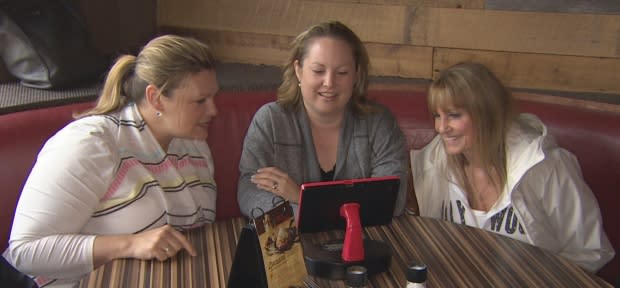
He has touchscreen tablets on all tables, allowing customers to order appetizers, drinks and desserts. He has also added a few tablet versions of full menus that allow some customers to order anything they want.
His servers are set up with tablets of their own that allow them to take conventional orders, which are instantly transmitted to the system in the kitchen.
Darrah doesn't believe the tablets shift work to customers. Instead, he argues, they allow fewer staff to "take on more tables but still give the same customer service."

Struggle to find staff
Tablets are just one of the tools the food service industry is turning to as restaurants try and tackle a pressing problem: staff shortages.
Last month, Canada's unemployment rate fell to 5.7 per cent, and the country added jobs at a rate not seen in a single month since 1976.
There were close to 64,000 job vacancies in the accommodation and food services sector in the fourth quarter of last year, an increase of around six per cent over the same period in 2017, according to Statistics Canada.
Restaurants Canada, a food service industry group representing more than 30,000 businesses in the sector, says that over half of its members who responded to quarterly surveys said staffing has been a problem for 2018 and 2019.
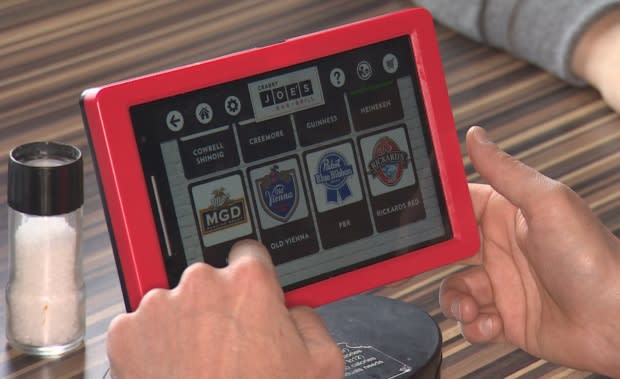
According to James Rilett, a vice-president with the organization, "there is a bit of a shortage with chefs and skilled labour, but the bigger worry is with the servers and unskilled back-of-house staff."
The organization points to a low unemployment rate, combined with an aging population and "decreased youth participation in the workforce" as sources of the problem.
It also said its members cite labour costs as the primary issue hurting their businesses, a reality at odds with attracting more workers with better pay or benefits.
Tablets just part of the tech factor
While fast food restaurants were early adopters of technology both in the kitchen and with features such as self-serve customer kiosks, the sector known as fast casual, where tableside service is the norm, are increasingly also embracing tech tools.
A Toronto-based firm called Givex makes the tablets being used in Crabby Joe's.
Graham Campbell, the chief operating officer of Givex, said "restaurants typically come to us because they have some sort of challenge they want to solve."
Beyond tablets, Givex's technology includes hardware and operational software to help restaurants prepare food, manage staff, track inventory and sales, and make menu or price changes. All data the company collects is loaded into the cloud within minutes for clients to access.
Givex is not the only business helping restaurants evolve and cope with staffing problems.
Canadian companies such as Lightspeed and Mealsy also offer self-service tablets while Touch Bistro sells a self-service kiosk.
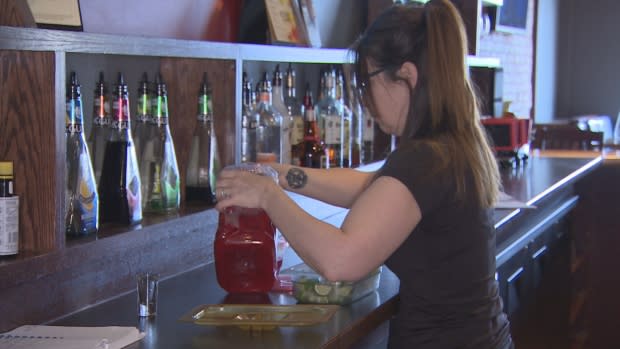
Then, there's California-based Presto.
Founded by a Canadian in 2008, Presto claims to be the leading player in self-serve tablets. It just launched a new watch-like wearable device for servers that instantly alerts them when a customer makes a request on their tablet.
The company says its tablets can be found in more than 2,000 U.S. locations and counts brands such as Appleby's, Denny's, Outback Steakhouse and Red Lobster as clients. Later this year, it will offer tablets in 25 Canadian restaurants.
While they have already been in use for several years in some sushi shops and airport restaurants in Canada, Rilett says it's too early to say if self-ordering tablets will become a trend in Canada.
Bring in the robots
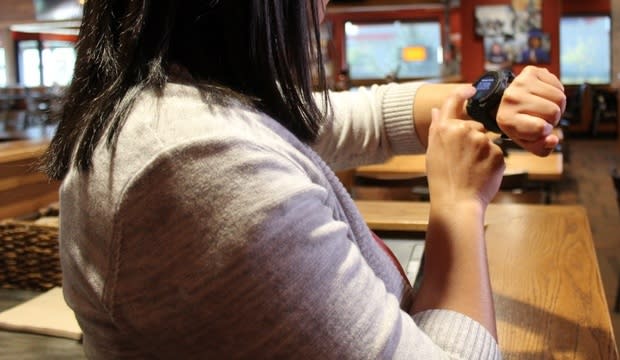
If a tablet isn't enough, restaurants can also turn to robots — though whether they are part of a core service or more of a marketing gimmick is up for debate.
A quick web search reveals that robot restaurants are a bit of a phenomenon in the U.S. Boston is home to a robot kitchen created by M.I.T. graduates and a celebrity chef from France.
In San Francisco, diners can get a robot-made pizza, hamburger or coffee.

Another American company called Eatsa has created an automated restaurant system for ordering and meal pickup that eliminates the need for wait staff and cashiers.
In Canada, there are robots making noodles in Saskatoon and serving sushi in Toronto.
Back in Listowel, a family at Crabby Joe's for a family birthday recently said the the tablets at their table fit right into the experience.
"I think it's great the technology is here" said Kara Meulensteen.
In a fine dining establishment, she said, she would want to be served by a waitress or waiter, but at a casual family restaurant like Crabby Joe's she was happy to use a tablet and was impressed they included entertainment and games for kids.
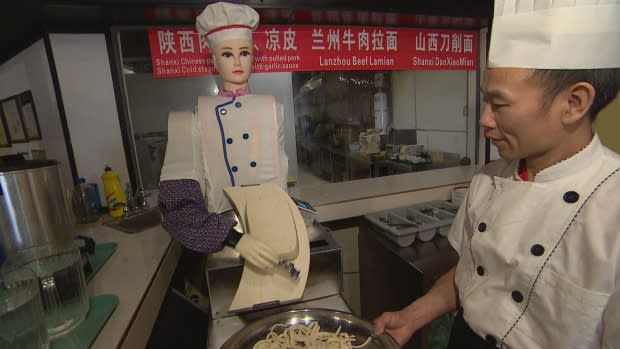
As for the owner, Darrah said having the tablets send orders to either the kitchen staff or bartender means his servers spend less time taking simple requests and more time selling specials, answering questions and delivering food and drinks.
Since starting with tablets 18 months ago, he estimates sales have gone up about 10 per cent as tables are handled more quickly, with fewer staff.
Though his location is the only Crabby Joe's using tablets in Canada, Darrah said he can't imagine a restaurant without them anymore.
While traditional paper menus and notepads are on hand should they be needed, lately, "finding a pen in here is hard," he said.

